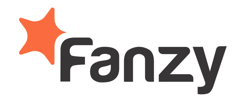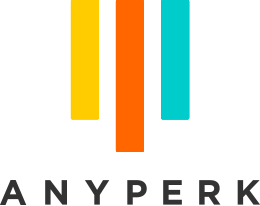 A Q&A with nFluence Media co-founder and CEO Henry Lawson. The Seattle, Washington–based company raised $1.7 million in its second round of funding in early February. Investors include Voyager Capital, with contributions from 17 Angels from the Alliance of Angels.
A Q&A with nFluence Media co-founder and CEO Henry Lawson. The Seattle, Washington–based company raised $1.7 million in its second round of funding in early February. Investors include Voyager Capital, with contributions from 17 Angels from the Alliance of Angels.
SUB: Please describe nFluence Media and your value proposition.
Lawson: nFluence’s solutions give businesses unparalleled insights into their customers and prospects, allowing them to understand, personalize and monetize their entire mobile and non-mobile subscription base whilst generating an uplift of between ten-and-52 times the standard response rates to advertising, content, and offers. And all within 30 seconds of a consumer’s time.
Our cross-platform UX, available for iOS, Android, and HTML-5, enables connected consumers to volunteer information about themselves through a fun, game-like UI, SWOTING—swipe voting content they like and dislike. Our proprietary data system builds a 700-plus dimension demographic and interest graph which we call an autograph, as well as over 2,000 brand affiliations, generating a fascinatingly accurate picture of their interests, demographics, and brand preferences, whilst immediately rewarding them with personalized multi-channel content, offers, and services.
SUB: Who are your target markets and users?
Lawson: Our target market consists of large subscriber base businesses that want to have a more complete conversation with their consumers. We are talking to media companies that want to understand and monetize their audience; shopping mall owners that want to be relevant to the people walking through the mall; cable TV and satellite providers that want to know what movies, TV and advertising to serve their customers; supermarkets and loyalty solutions that want to understand what their consumers are interested in outside of what they put in their shopping basket; and credit card companies that want to go beyond their spend graphs. So as you can imagine, we are rather busy.
SUB: Who do you consider to be your competition?
Lawson: In all honesty we’ve not seen anyone doing what we are. However, Big Data is in vogue at the moment, with companies spending millions of dollars trying to predict human behavior through mining more-and-more terabytes of consumer data in an attempt to squeeze a few more percentage points in value.
SUB: What differentiates nFluence from the competition?
Lawson: Marketing is full of companies who sniff consumers’ data exhaust, and write algorithms to find meaning within it. Most investors we’ve spoken to find it hard to differentiate between them, and most marketers are increasingly concerned about the privacy issues these solutions throw up.
We solve both of these problems by asking the customer, and the dividend for the marketer is an order of magnitude higher response rate—somewhere between 10x-times and 52-times—and it turns out that, when asked in the right way, consumers give really rich information to people they trust
SUB: When was the company founded and what were the first steps you took in establishing it? In terms of the product, was there an ‘aha’ moment, or was the idea more gradual in developing?
Lawson: We created nFluence when Tom Huseby, our now chairman, introduced me to Seattle mobile startup veteran Brian Roundtree back in 2010. All three of us had been considering ways to make marketing work better from the consumer’s point of view. At the time, Brian had been working on an app recommendation engine and, despite its ingenuity, I just couldn’t see how recommending mostly free apps could sustain a business—it was a brilliant zero billion dollar opportunity. That’s when we had our ‘Eureka!’ moment—why don’t we build on the same principles and game-like UX inherent in Brian’s app recommendation technology, but use it to recommend advertising, movies, music or any form of content, and matched to the declared interests of the user. And so nFluence was born.
SUB: How did you come up with the name? What is the story behind it?
Lawson: We wanted to emphasize the influence the consumer can have on the marketing they receive and, at the same time, communicate the message that their identity was much less important than their interests. So we dropped the ‘I’ out of influence.
SUB: What have the most significant obstacles been so far to building the company?
Lawson: When we first launched the company we knew that we had to prove that the technology works, and to do that we had to get it into the hands of real consumers. So, we decided to launch a showcase that demonstrated our technology and its performance from end-to-end. That’s why dealBoard was born. dealBoard aggregates 59 daily deal providers into custom recommendations based on interests and location. It has been an amazing success, proving that our autographs are 81 percent accurate within 30 seconds of use, so we outperform leading daily deals companies by 52-times. That’s 52-times the response rate to the same offer, just by finding the people who really want to see that offer. Daily deals are a medium for us just like big retailers, TV or music are the medium in our other applications.
We have been a victim of this success in two ways—first getting people to understand that allowing consumers control generates more, rather than less, data, and all of it more accurate; and second, getting companies to build this approach into their long marketing time horizon. But the pace is incredible, and we are building the first B2B2C apps with top marketing names and launching them imminently.
SUB: You just raised $1.7 million in new funding. What are your plans for the funds?
Lawson: The nFluence plan has always been ambitious, and yet straightforward: to cover multiple sectors on both side of the Atlantic. We have been in the U.S. and UK from day one as we combine the innovation in technology of the Northwest U.S. with the marketing industry in London—which we see as leading the world. Raising capital in the U.S. is also considerably easier. We are now a really eclectic mix with Brits in the U.S., Americans here in the UK, and French and Spanish people all over. We all have different perspectives that are all dedicated to making marketing better for consumers. But it does take a big team—16 people and growing—and we have to get to scale quickly. Having supportive, enthusiastic investors is brilliant because they bring a valuable perspective of their own.
SUB: How much outside funding did you raise previous to this new round?
Lawson: We raised $3 million in the previous round to build the technology and launch our showcase application.
SUB: Why was this a particularly good time to raise more funding?
Lawson: We simply needed more human resources to respond to the interest we were getting. I can only be in so many places at one time, and therefore we needed a CRO, which we are about to announce in the next few weeks. We have also just hired a VP Client Solutions last month to onboard clients with the technology.
SUB: How does the company generate revenue or plan to generate revenue?
Lawson: We have a simple yet scalable business model based on licensing our technology based on volume—the size of the ‘value added’ our technology brings. You only pay us if your users are interacting with the technology, and the fee is recouped many times over by the client due to the increased revenue and profit.
SUB: What are your goals for nFluence over the next year or so?
Lawson: nFluence autographs have proven capable of transforming responses from consumers. With the support of superb top-tier partners, we want to deliver autographs widely into consumers’ hands and enable them to benefit from relevant content, offers, and advertising—to take control and move away from being followed across the web by black box algorithms.
nFluence Media – www.nfluence.com











